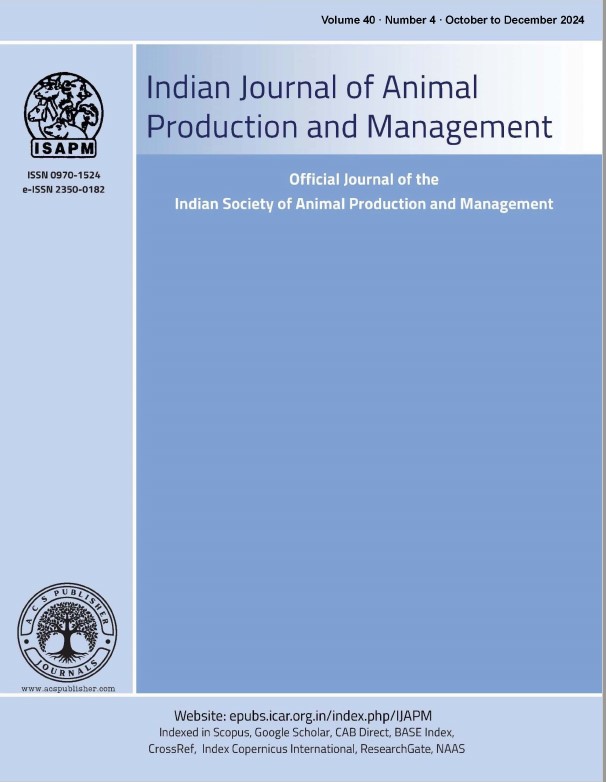DIFFERENTIAL RISK ORIENTATION TOWARDS PIG REARING IN DIFFICULT AREAS
Keywords:
Pig rearers, cultural orientation, risk orientationAbstract
Looking into the massive popularity and dependency on pigs in rural areas, a study on the risk orientation of the pig rearers in Dima Hasao district characterized by hilly terrain and difficult conditions was carried out by collecting fifty each pig farmers from two developmental blocks of the districts namely Diyungbra (Block I) and Jatinga (Block II) thereby making the sample size 100. A pre-tested, reliable and valid interview schedule containing five positive and negative statements were placed before the pig rearing farmers and they were asked to place their agreement in either of the five degrees ranging from strongly agree, agree, undecided, disagree and strongly disagree with the corresponding values of 4,3,2,1 and zero respectively for positive statements and vice versa in case of negative statements. After the collection of information, it was found that majority of the pig farmers were in the middle group of distribution with mean values of 13.42 per cent, 13.26 per cent and 13.34 per cent in Block I, Block II and the pooled sample respectively out of the total obtainable scores of 20. By this finding, it could be resolved that all of them by and large had positive risk orientation towards pig husbandry. Further, they showed that 58 per cent, 50 per cent, 32 per cent, 26 per cent and 20 per cent of the respondents showed their risk agreements to “A farmer should take more of a chance than to be content with smaller but less risky profits”, “A farmer who is willing to take greater risk than the average farmers usually does better financially”, “Trying on entirely new method in farming by a farmer involves risk but it is worth trying” “It is better for a farmer not to try new farming method unless most other farmers have used them with success”, and “It is good for a farmer to take risk when he knows of his chance of success is fairly high” respectively in Block I. Whereas in Block II the corresponding figures were 40 per cent, 30 per cent, 24 per cent, 46 per cent and 34 per cent and in the pooled sample 49 per cent, 40 per cent, 28 per cent, 36 per cent and 27 per cent respectively which surely indicated that farmers preferred taking risk when chance were bright including adopting new methods and new technologies on one hand but with a tendency to restricting themselves to have piggery founded on the values of tradition, culture and conventions on the other hand. They preferred piggery as a cultural entity rather to a commercial activity. These probably could sum up risk orientation to better socio-cultural and economic development in the state in general and the district in particular.

